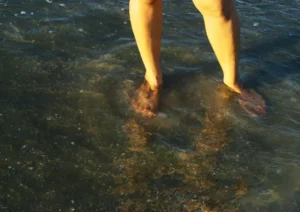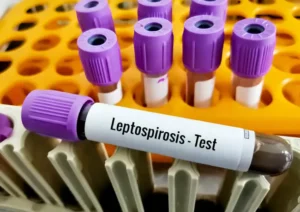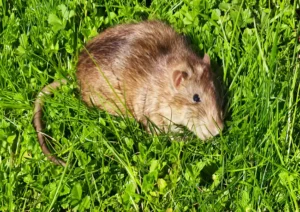Overview of Leptospirosis
What is Leptospirosis? (എലിപ്പനി)

Leptospirosis is a bacterial infection caused by Leptospira bacteria. It can affect both people and animals, causing a range of health problems. Symptoms can be mild like flu-like aches or serious enough to lead to death without treatment.
What Causes Leptospirosis?
The bacteria can be found in water or soil that’s been contaminated with the urine of infected animals, mostly rodents. So being around floodwaters or stagnant water puts you at risk.
Symptoms of Leptospirosis
Symptoms usually show up pretty quickly, often within 5 to 14 days after being exposed, and could include:
- Fever
- Muscle aches
- Headaches
- Jaundice
- Rash
In some cases, folks might have stomach issues, which highlights how important gut health is. It’s really important to spot these symptoms early for good treatment outcomes.
Transmission and Risk Factors
How Does Leptospirosis Spread?
Leptospirosis mainly spreads through touching contaminated water or soil. If you come into contact with the urine of infected animals, the bacteria can enter your body through any cuts or scrapes.
High-Risk Activities
Certain activities can really raise your chances of getting exposed:
- Swimming or wading in possibly contaminated waters
- Working in farming or doing flood cleanup
- Hiking or camping in areas where there are lots of rodents
Who is Most at Risk?
Some groups of people are at a higher risk for getting leptospirosis. These include:
- Farmers
- People using recreational water
- Vet workers
Knowing how leptospirosis spreads and who’s at risk is super important for keeping yourself and others safe.
Prevention Methods
Vaccination for Leptospirosis

Getting vaccinated is a smart way to help prevent leptospirosis, especially if you’re in high-risk groups like farmers and veterinarians.
Vaccines can help build up immunity to different strains of the bacteria, lowering the chances of getting sick.
Good Hygiene Practices
Keeping good hygiene can really cut down on spreading the bacteria. Simple things to do include:
- Wash your hands often, especially after being outside
- Make sure your water sources are clean
- Don’t touch potentially infected animals
Wearing Protective Gear
When you’re involved in high-risk activities, wearing the right protective clothing is key. This means:
- Waterproof boots and gloves if you’re wading through water
- Long-sleeved shirts and pants to cover your skin
Using these prevention methods is crucial for keeping yourself and others safe from leptospirosis.
Control Measures
Early Detection and Treatment
Spotting leptospirosis early is super important for effective treatment. If you catch the symptoms quickly, you can lessen how serious the illness gets. Getting medical help right away when you notice signs of infection can lead to timely antibiotic treatment, which can really improve your outcome.
Environmental Actions
Taking steps to control the environment can help stop leptospirosis from spreading. Some strategies include:
- Properly managing waste to keep rodent populations down
- Making sure drainage works well to avoid standing water
- Regularly cleaning and disinfecting areas that might get contaminated
Animal Control Strategies
Managing animal numbers, especially rodents, is also crucial. This could involve:
- Safely using traps and rodenticides
- Vaccinating pets to keep them safe and reduce the risk of spreading the disease
These combined strategies are really important for public health in tackling leptospirosis effectively.
Public Health Strategies
Surveillance and Reporting
For managing leptospirosis, having strong surveillance and reporting systems is key. These help track infection rates and spot outbreaks early, making it possible to act quickly. Health authorities usually rely on data from hospitals and labs to keep an eye on trends.
Raising Public Awareness
Getting the word out about leptospirosis is crucial. Awareness campaigns that educate people can cover:
- How to recognize symptoms
- Understanding how it spreads
- Promoting preventive measures
For instance, handing out flyers at local health food stores can be a helpful way to educate folks.
Responding to Outbreaks
When there’s an outbreak, a fast and organized response is a must. Public health officials might do things like:
- Investigate where the outbreak came from
- Educate the community to help stop more infections
- Roll out targeted vaccination programs in affected areas
Together, these actions can help lessen the impact of leptospirosis on public health.
Global Impact and Challenges

Leptospirosis Around the World
Leptospirosis is still a big health issue globally, especially in tropical and subtropical areas.
The World Health Organization estimates that millions of cases go unreported each year.
This disease often hits underserved communities hardest where water and sanitation systems aren’t up to par.
Challenges in Control Efforts
Even with awareness and prevention strategies, there are many hurdles that make it tough to control leptospirosis:
- Limited funding for vaccination initiatives
- Inconsistent data collection and reporting
- Not enough healthcare access in rural regions
Looking Ahead
To tackle these challenges, future plans might include:
- Better global collaboration for sharing data
- More investments in vaccines and prevention strategies
- Educational programs geared towards high-risk communities
Thinking about these initiatives can help strengthen the global response to leptospirosis and boost health outcomes everywhere.
Conclusion and Recommendations
Quick Recap on Prevention and Control
To wrap up, preventing and controlling leptospirosis requires a multi-faceted approach. Key strategies include vaccination, good hygiene, early detection, and managing the environment.
Importance of Teamwork
Working together among different groups—governments, healthcare providers, and communities—plays a huge role in managing this disease effectively. Sharing resources and information can enhance response efforts and improve public health outcomes.
Suggestions for Everyone
For individuals, keeping good hygiene and being aware of the risks is super important. Authorities should focus on funding education and prevention programs. When everyone pitches in, we can really cut down on how much leptospirosis impacts communities worldwide.
HOSTINGER HOST DISCOUNT CODE
Mskmedias
1 thought on “Leptospirosis prevention and control”